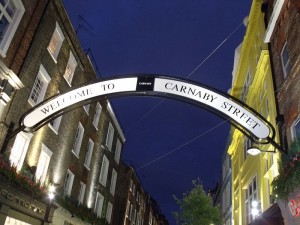- They say if you remember the 60s, you weren’t there. But that’s just one untruth about a decade that is cited as inspirational or source of all problems by many today.
How one views the 1960s, particularly in the UK, is both a philosophical thing and where people stand on the political divide. Many political, industrial, banking, education, media leaders are of an age to remember their youth fondly or recall their parents’ affection for those heady days. People who lived through the 1960s and many younger people today, think well of the fashions, the tolerance, social reform/transformation, new liberal ideas, “sex, drugs & rock ‘n’ roll” and England winning the football World Cup.
Terms also associated with that decade (roughly 1964 to the early 1970s) are the Swinging Sixties, the Permissive Society, the Cultural Revolution and the radicalism of pop culture. In Britain, those days saw liberalisation of homosexual and abortion laws, lowering the voting age and abolition of theatre censorship.
But for many, that decade started the rot in society evident today.
Myths and Misconceptions
In fact, according to UK historian Dominic Sandbrook in his book Never Had It So Good, the whole decade is full of myths and misconceptions when we look back at it. For instance, in Britain with almost 60 million people, less than one million bought the best-selling single records in a week, while over 20 million regularly tuned in to watch The Black and White Minstrel Show on TV.
It is popularly believed that the Beatles were the unbeaten kings of the charts with 22 top ten hits; but Cliff Richard had thirty eight. It’s true, however, that the Beatles were musical innovators with their Sergeant Peppers’ album, along with the Beach Boys’ Pet Sounds, and their use of different instruments, emerging recording technology and vocal layering is still admired today.
South Pacific was top selling album for 46 weeks. Two versions of The Sound of Music occupied the charts for over five years and sold more copies worldwide than the Beatles’ top seller, Abbey Road.
While miniskirts were an iconic image of the times, outside London and the major cities they were slow to catch on. It was not as easy for young people who were not rock stars to acquire cocaine, cannabis and LSD as is assumed, or as is the case today.
When two of the Rolling Stones were jailed for drug possession, a Gallup poll found 90% of respondents in favour of criminalising drug dealing and 80% supported making smoking dope a crime. In 1969, more polled in favour of return of both capital and corporal punishments, and, according to Sandbrook’s research, people were more promiscuous before the 1960s than is supposed. Almost half admitted to sex outside marriage.
Millions of condoms were produced every year before the war; in 1964 most teenagers were virgins at 19 and even by the end of the 60s, only one in ten women had used the contraceptive pill. Certainly, the illusion that 60s’ sexual freedom was unique is fostered by films (like, Room at the Top), television playwrights (Denis Potter) and magazines like Playboy and Penthouse, yet most men wanted their women keeping house, raising children.
Feminist Revolution Another Myth
The truth is that Britain was generally chaste, with fears about jobs, rise in immigration, joining the European Common Market of more concern than sexual liberation. While the pill gave freedom to women against unwanted pregnancy if not sexually transmitted infections, the notion itself of free love meant women being more sexually available to men.
Feminists, in the media-created term ‘women’s lib’, demanded rights for women, and burned their bras in a gesture to show their independence. However, there is no evidence that it happened. Perhaps US images of young men burning their draft cards merged in popular consciousness with pictures of women throwing bras into rubbish bins. Merely going braless was expressing revolution, ‘letting it all hang out’.
Establishment values were rejected and mocked by a minority of young people who held little sacred that previous generations had. They were blamed as insidious radical influences with their easy social-economic lifestyles and for causing damaging changes, but the truth was, according to Prof Frank Furedi of the UK’s University of Kent, that by the 60s there was evident a malaise of intellectual thinking that began after the war as the roles of industrial capitalist societies, family life, authority and religion were questioned.
In this climate of uncertainty a conveniently media-packaged entity like ‘The Permissive Society’ has become the justification, scapegoat, explanation for left and right thinkers alike. Today’s problems from crime to the crisis in education and healthcare, from loss of personal freedom in the surveillance society and from threats to social stability to economic breakdown of the financial system, are all traceable back to the 1960s, Furedi says.
On the other hand, the world has been left music, art and memories that are unique.








